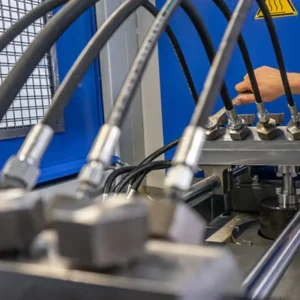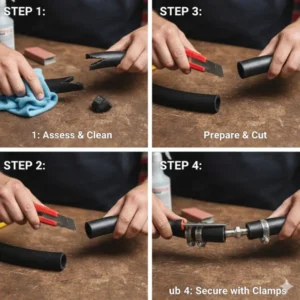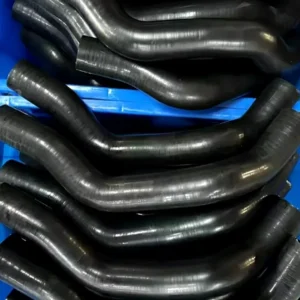Forming or shaping a rubber hose is often necessary to correctly route fluid lines around engine components or through tight industrial systems. Done improperly, this process can lead to hose kinking, which restricts flow and dramatically shortens the hose’s lifespan, risking system failure.
Successfully forming a hose involves carefully controlling the bend to match the installation path while preserving the hose’s circular structure. By following proven techniques involving heat, internal support, and proper securing, you can achieve a custom fit without compromising integrity.
Why Forming Rubber Hoses?
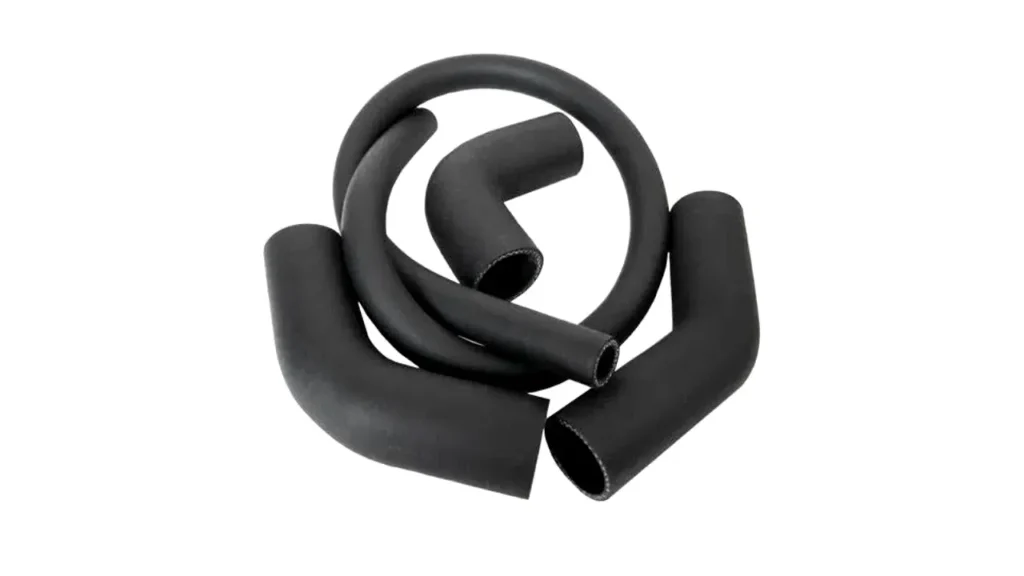
Forming rubber hoses is a vital step in many automotive and industrial applications where fluid lines must navigate complex pathways. This process allows technicians to customize a straight hose to a specific, unique shape, ensuring a perfect fit that maximizes system performance and prevents potentially damaging issues like abrasion or kinking.
Key Reasons for Forming Rubber Hoses:
- Custom Fit for Unique Routing Requirements: Many machines, especially engines and hydraulic systems, have tight, irregular spaces that require hoses to follow precise curves and angles. Forming a straight hose allows for custom fabrication, ensuring the line fits perfectly without stretching, twisting, or pressing against other critical components.
- Prevent Kinking and Maintain Optimal Flow: A formed hose follows a smooth, controlled bend, adhering to the material’s minimum bend radius. This prevents the hose from collapsing or kinking, which is critical for maintaining maximum pressure and flow rate, ensuring the equipment operates at peak efficiency without restriction.
- Avoid Abrasion and Component Damage: Improperly routed hoses that rub against sharp edges, moving parts, or hot surfaces will quickly fail. Forming the hose ensures a safe path that keeps the line clear of potential hazards, preventing external wear and prolonging the life of both the hose and surrounding machinery.
- Reduce Installation Stress and Leaks: Hoses that are forced into position create significant stress near the connection points, leading to seal failure and leaks. A properly formed hose sits naturally in its position, reducing tension on fittings and clamps, which guarantees a more reliable, durable, and leak-free connection.
How to Form a Rubber Hose?
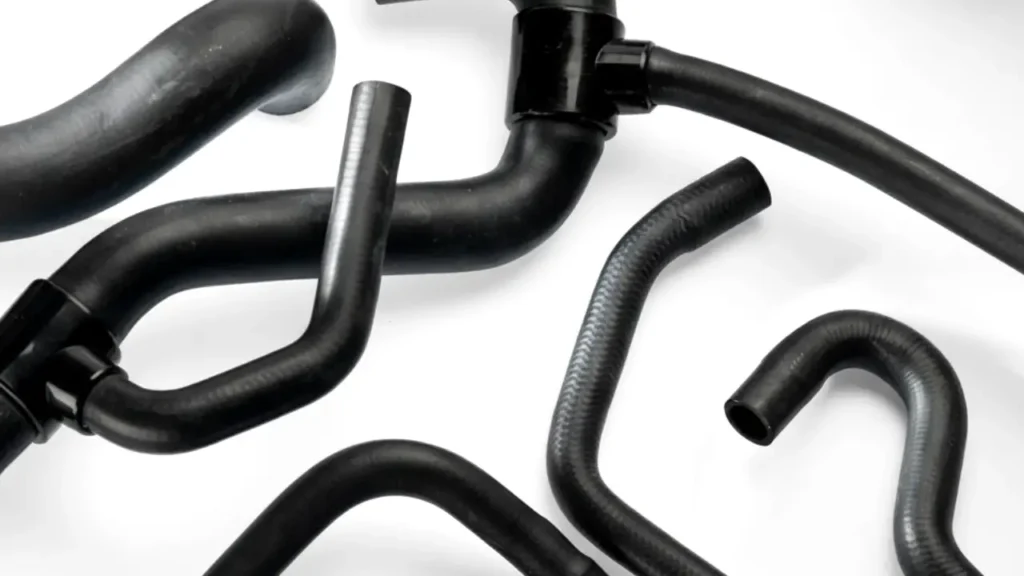
Forming a rubber hose requires controlled heat and proper support to create a permanent bend without structural collapse or kinking. By carefully shaping the hose to its desired path, you ensure efficient fluid flow and a perfect, long-lasting custom fit for your application.
Step 1: Determine the Final Shape and Radius
First, accurately measure and mark the desired path and the points where the bends need to occur. Always check the hose manufacturer’s minimum bend radius and ensure your intended curve is significantly wider than this limit to prevent wall collapse.
Create a template or guide, perhaps using a piece of wire or stiff cardboard, to replicate the exact curve required. This preparation ensures the new form is precise and prevents the need for repeated bending, which can weaken the hose material over time.
Step 2: Use Internal Filler for Support
Before applying heat, fill the hose with a pliable material such as fine, dry sand, salt, or a tightly coiled spring. Pack the filler material densely to provide full support to the hose walls throughout the entire bending section.
This internal support is essential because it prevents the inner wall of the bend from collapsing and forming a destructive kink when the hose is flexed. The filler holds the hose’s circular cross-section intact while the rubber is softened and shaped.
Step 3: Apply Controlled Heat Evenly
Using a heat gun on a low setting, a hair dryer, or a boiling water bath, gently and evenly heat the section of the hose to be formed. Continuously move the heat source to prevent scorching the rubber in one spot, warming it just enough to become pliable.
The goal is to soften the rubber so it can be shaped without forcing it, making the process effortless. Once the hose is warm and noticeably flexible, proceed immediately to the shaping stage before the material starts to cool and harden again.
Step 4: Shape the Hose Using a Guide
While the hose is still warm and filled with the support material, gently and slowly bend it around your predetermined template or guide. Hold the hose firmly in the new position for several minutes until the material begins to cool and set into its new permanent form.
Do not allow the hose to cool completely before the bend is finished and secured. The new shape is retained as the rubber polymers realign during the cooling process, creating a heat-set curve that matches your custom routing.
Step 5: Remove Filler and Secure the Hose
Once the hose has fully cooled and the new shape is set, carefully remove the internal filler material. For sand or salt, this involves simply shaking it out; for a spring, slowly pull it out while gently flexing the hose.
Finally, install and secure the newly formed hose into your application. Use clamps or mounting brackets to maintain the shape and prevent external forces from pulling the hose back into its original straight configuration, which could cause a kink.
Conclusion
By mastering the techniques of heat application, using internal and external support, and adhering strictly to the minimum bend radius, you can custom-form rubber hoses for any complex routing requirement. These methods ensure the hose maintains its full internal diameter for optimal, kink-free fluid transfer.
Remember that while you can shape a straight hose to fit, the material’s ability to hold a specific form is fundamentally tied to its inherent quality and reinforcement. A high-quality, reinforced hose will retain its new shape better and resist collapse under demanding conditions more reliably.
For durable, high-performance hoses designed for easy forming and maximum shape retention, choose Gushan Rubber. We provide a complete range of quality wholesale rubber hoses engineered to meet the strictest industrial and automotive specifications. Contact us today to get the best wholesale rubber hoses from Gushan Rubber!

